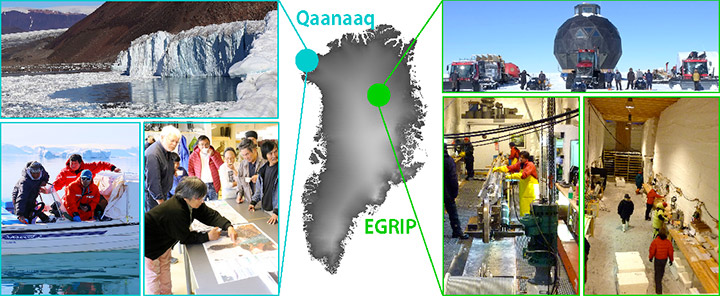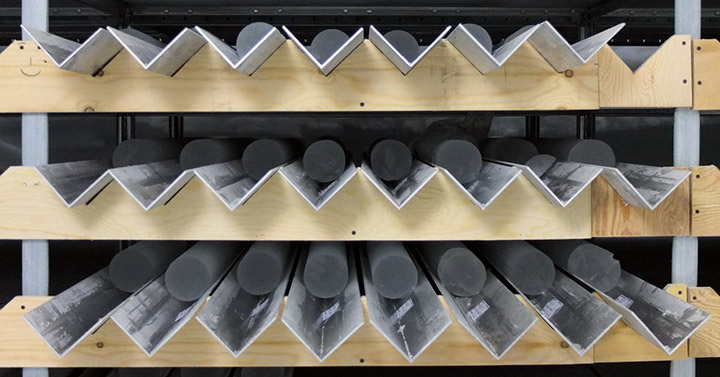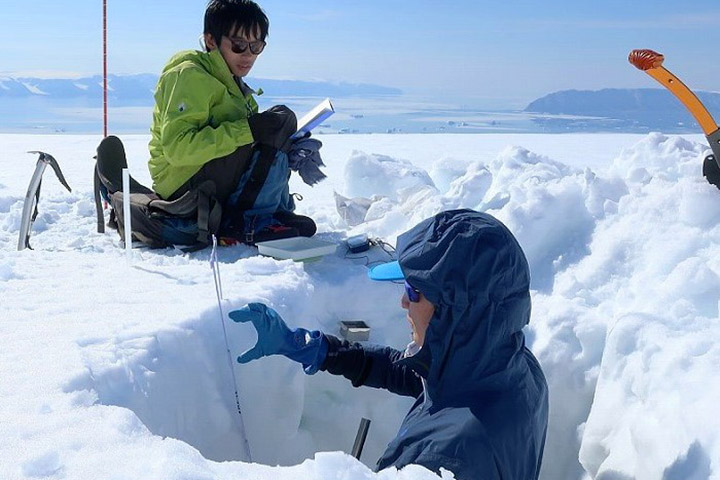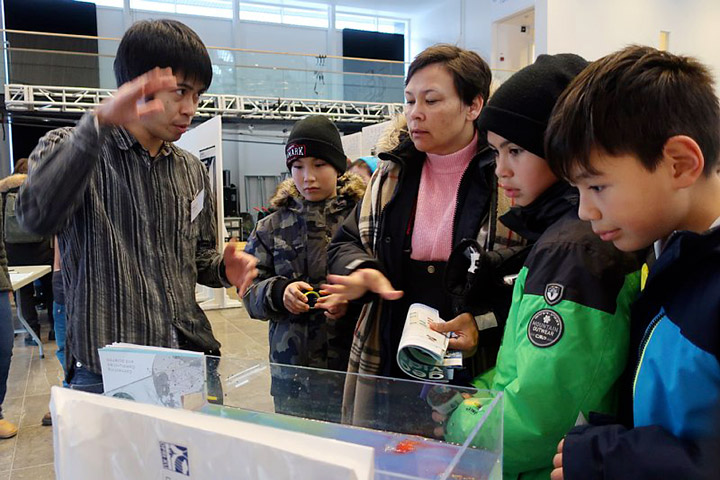Theme 2
Variations in the ice sheet, glaciers, ocean and environment in the Greenland region

EGRIP and Qaanaaq in the map of Greenland
In Theme 2, we were engaged in the following two research projects: (1) participating in the East Greenland Ice-Core Project (EGRIP) to understand the mechanisms of ice-sheet changes and climate changes, and (2) focusing on the northwestern Greenland ice sheet, an unexplored area with rapid environmental changes in recent years, and conducting a study on the interaction between the climate change–affected glaciers and ice sheets and oceanic changes, as well as on ongoing natural disasters and the social impacts thereof.
The achievements in (1) include that we participated in ice-core drilling at EGRIP and international ice-core analysis campaigns. We also conducted pit observations near the drilling site and reconstructed the surface mass balance during the past 10 years. Ice cores drilled previously were also analyzed, which revealed temporal variability in black carbon (BC) concentration over the past 350 years. Furthermore, we conducted laboratory experiments using artificial ice and ice-cores to understand mechanisms of ice-sheet flow that is closely related to predictions of future sea-level rise. This resulted in an improved flow law for impurity-containing ice. With regard to numerical prediction of sea-level change utilizing ice-sheet models, the GIA model that calculates diastrophism due to ice-sheet changes was improved. We also improved ice sheet modeling by taking into account impurity effects and ice stream physics.

Ice cores being kept in the trench / Photo by Wataru Shigeyama (The Graduate University for Advanced Studies)
The achievements in (2) include that, with cooperation from overseas universities and local collaborators, we quantified the mass loss rate of rapidly shrinking glaciers and ice sheets and contributed to clarifying the mechanism of the changes. Among others, we gained much knowledge about, and reported the findings of, the change in calving glaciers and the processes near the calving front. Moreover, we first quantified the impacts of meltwater from glaciers and ice sheets on the ocean, especially its role in supplying nutrient to the fjords. This study also showed the influence of glaciers on the fjord ecosystem from plankton to sea birds and marine mammals. When it comes to land-related outcomes, we have shown the mechanism and prospects of glacieral river floods, landslides and other natural disasters. In addition, atmospheric material transport and snowfall, as well as distribution of sea ice and icebergs, were revealed in this study, quantifying the environmental changes in the coastal areas of Greenland. These findings were shared with local residents in the annual workshop held in Qaanaaq. Our survey and observations conducted in close collaboration with local residents is a model case for future research activities in the Arctic.


Top: Surface mass balance observation on Qaanaaq Ice Cap / Photo by Ken Kondo (Hokkaido University)
Bottom: Explain the results of ocean measurements / Photo by Naoya Kanna (Hokkaido University)
Research background and overview
Please see here.
Research achievements
Please see here.




